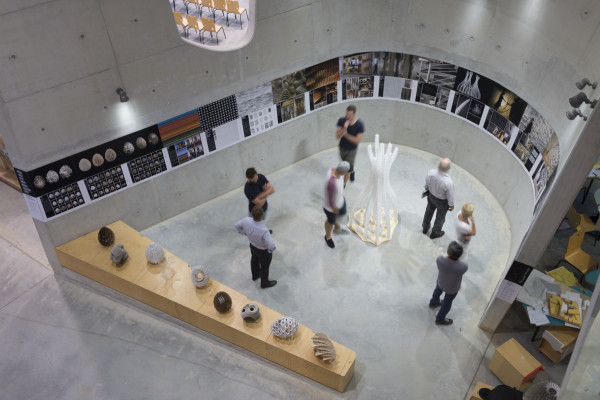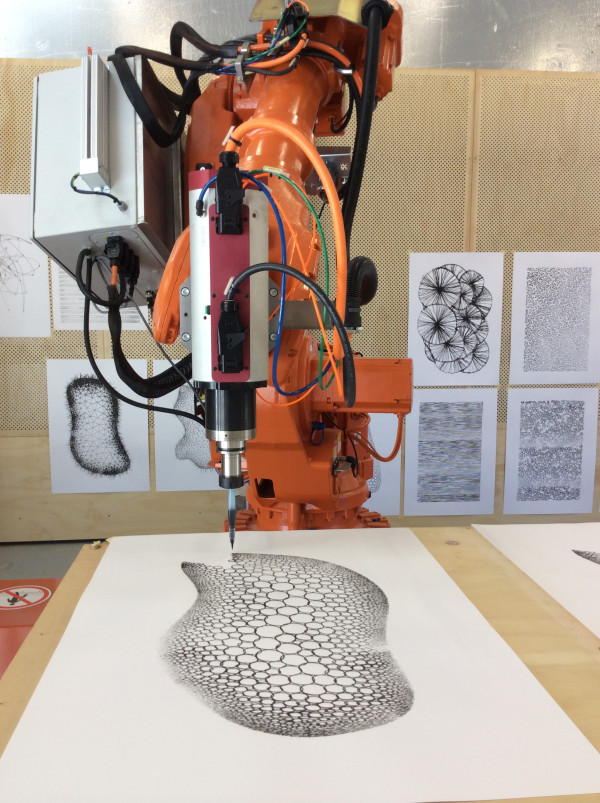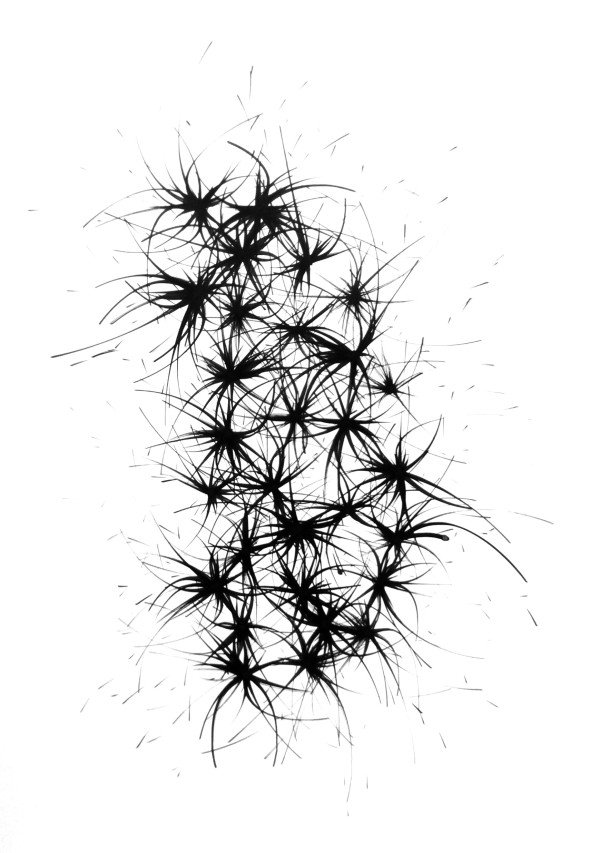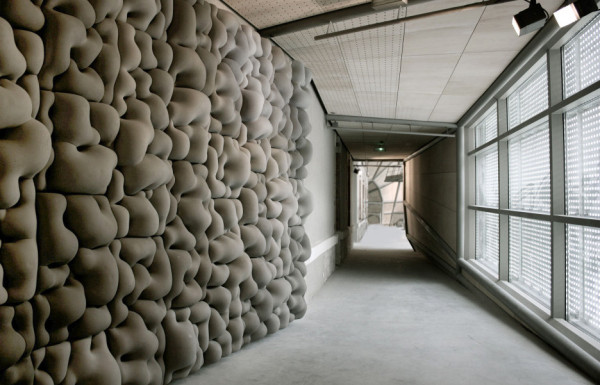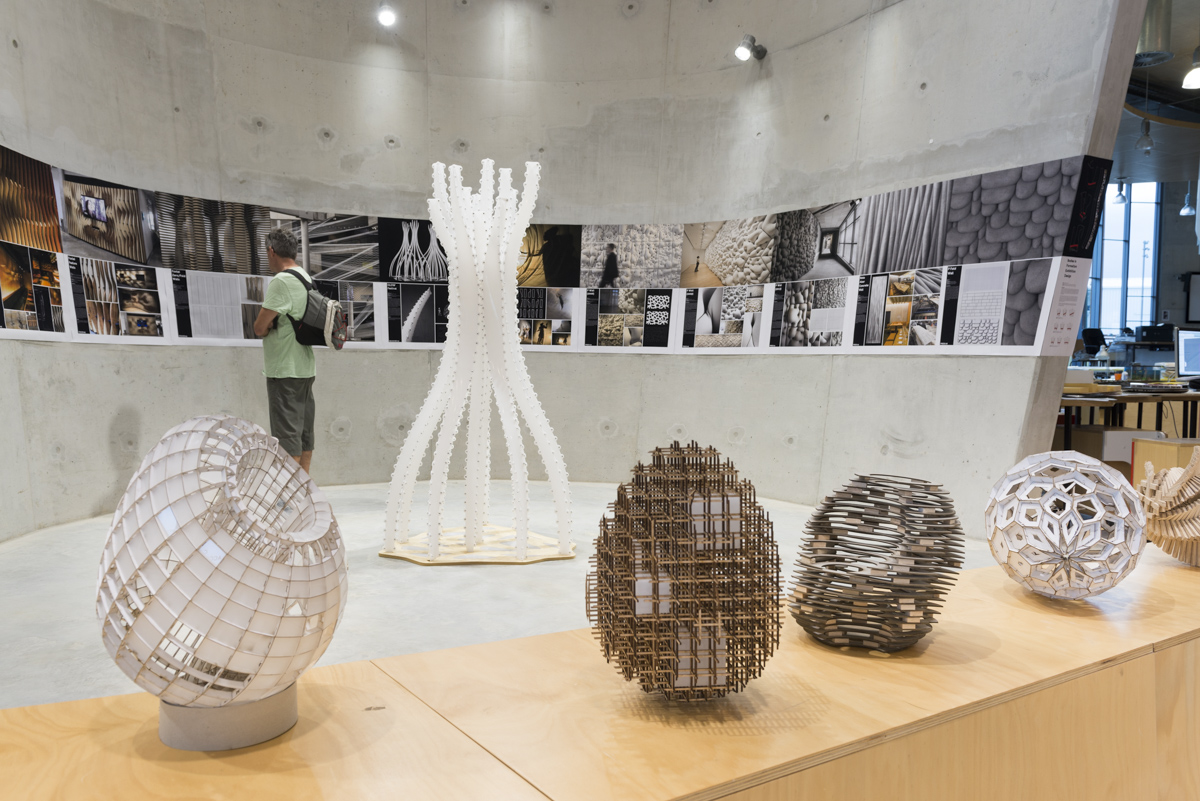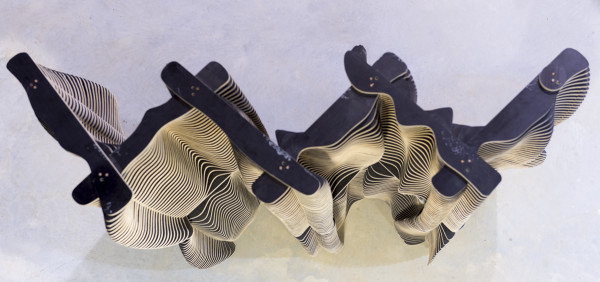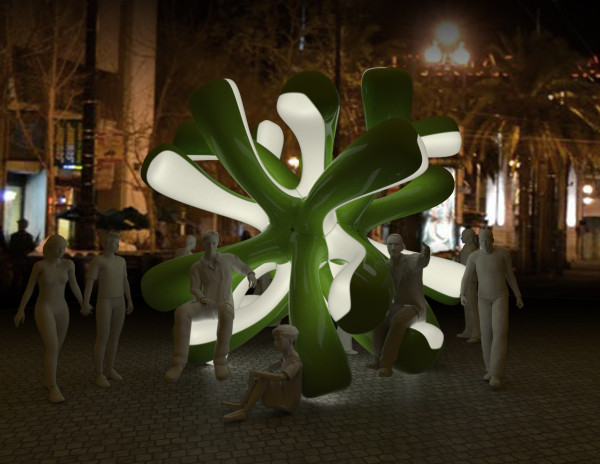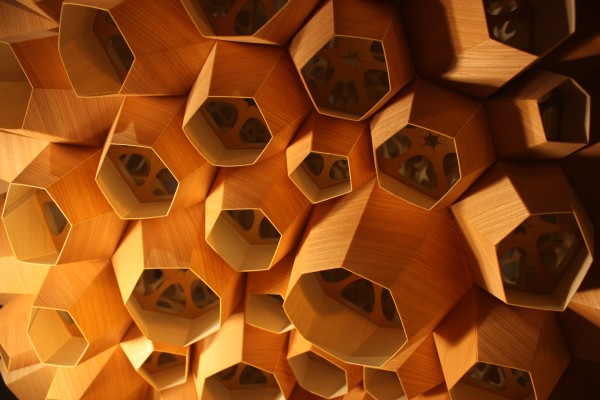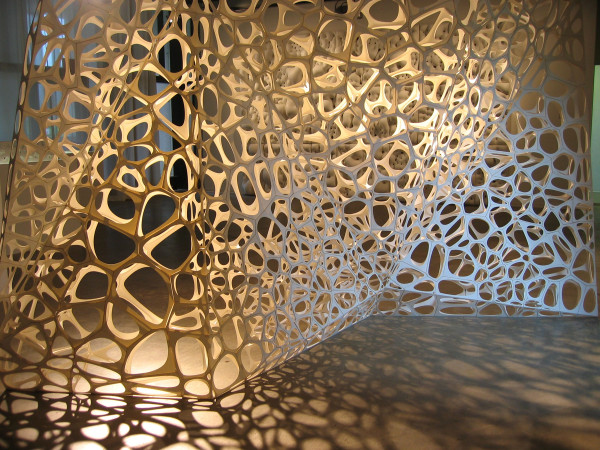
Bodies in Formation exhibition
Share
All images courtesy Paul Dielemans Photography.
The exhibition, Bodies in Formation, comprising current and past works by Matsys Design founder, Andrew Kudless, is now on display in the Forum at the Abedian School of Architecture, Bond University. Kudless is an architect and associate professor at the California College of the Arts based in San Francisco; he’s been a visiting academic and researcher in robotic fabrication at Bond University since May 2014.
This exhibition presents selected works from the office since its inception in 2004 and documents the research produced by Kudless’s students at Bond.
The opening of ‘Bodies in Formation’ appropriately marked the culmination of the 2014 Architectural Lecture Series, hosted by the school of architecture. Premised by the phrase “Design is Research”, the lecture series sought to focus on the creative and progressive outcomes that can result at the intersection of practical and scholarly investigation. Kudless has positioned his practice at this intersection.
Kudless’s projects, both speculative and built, harness the opportunities that exist within the digital field, to interrogate issues of design, craft, and fabrication. Individually and collectively, the works present an examination of the tension that exists between the analog and the digital.
The work is loosely grouped according to seven “morphotypes” that share certain formal, performative, and/or material behaviours; Shells, Cells, Eggs, Fields, Stacks, Branches and Pneus. The morphotypes simply serve to provide a retrospective classification system for Kudless’ expanding body of research. Kudless defines the role of the morphotype as being:
“Unlike a typical typological organization that would organize information by program, the morphotypes attempt to describe the more essential relationships between form, fabrication, and performance. That is, I am interested in how form is related to formation or the ways in which forms come into being through both natural and synthetic means.”
Crosspollination of ideas between the morphotypes is evident. Kudless is less concerned with the classification system and more interested in the ‘species’. Following the lineage of work within morphotypes 1 to 7 the transfer of systems, logics and tools between the projects is evident. When asked to define his approach to practice, Kudless states:
“I pursue this research through a wide variety of methods that range from the production of drawings, sculptures, and installations to the design of speculative cities and landscapes. The work investigates the formation and application of geometric logics and their interactions with materiality and performance across a wide range of scales. Similar to a traditional craftsmanship, the creation and honing of custom digital tools goes hand in hand with the production of finely crafted artifacts.”
Through considered selection, crafting and application of ‘digital tools’, Kudless’ approach to solving complex design issues transcends scale and discipline. Honeycomb Morphologies 2004, catalogued under the ‘Cell’ morphotype, looks to biology and the natural world as a source of logic for non-standard and highly differentiated geometries.
This work using cell structures seeks to develop a material system with a high degree of integration between its design and performance. This approach is also the focus of the morphotype ‘Eggs’, a body of research that specifically explores the act of making. By adopting the egg as a predetermined form that is both placeless and without program the act of making is prioritised and brought to the forefront of the design process.
While our ability to make complex objects is becoming increasingly accessible through digital fabrication, Kudless reminds us that the by-product of these developments is a lack of a consideration for material waste. His project Zero/ Fold Wall 2010, demonstrates the logic behind the ‘Egg’ exercise. Making and form are given equal priority. Integration of this thinking early in the design phase was critical to achieving material efficiency without compromising the design outcomes.
Catalogued by the seven morphologies, Kudless’ work is underpinned by an exploration of the integral relationships between design, technology, materiality, and performance. Bodies in Formation highlights the emergent relationships between architecture, engineering, biology and computation. These cross-disciplinary relationships are radically changing the conditions for production in the field of architecture. Transcending various scales and typologies and taking inspiration from a myriad of sources, Kudless’ work challenges our preconceptions of Architecture and the boundaries of traditional practice.
The exhibition is located in the Abedian School of Architecture Building 3B and is open to public viewing from 8am – 6pm until December 19, 2014.
Text: Sarah Lindsay

